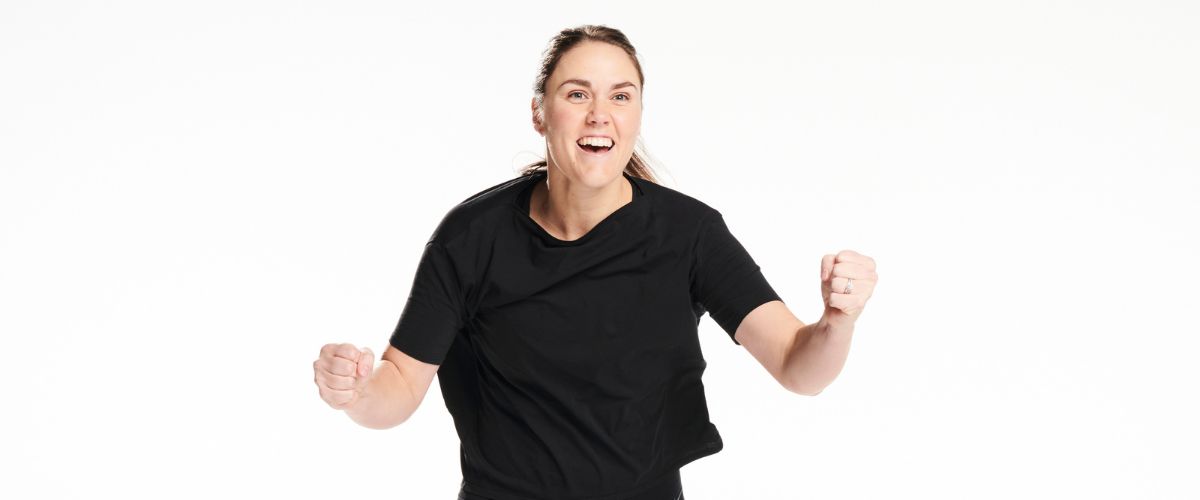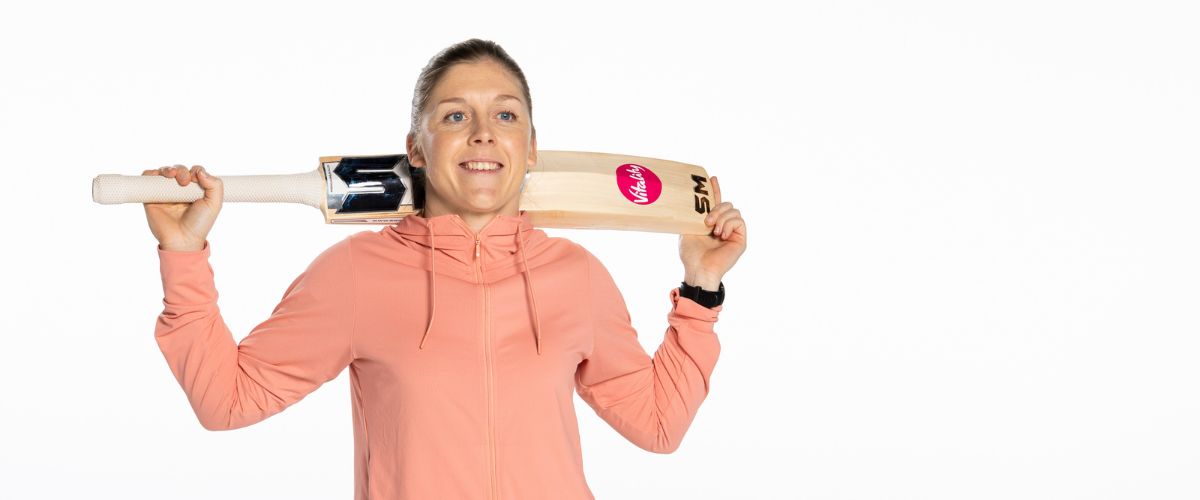‘No longer just a boys’ club’: Celebrating the sisterhood of sport
Britain’s female cricketers have been rising to the occasion and reaching all-new heights. To mark 20 years since the first Women’s Twenty20 match, we spoke with Vitality Ambassadors Nat Sciver-Brunt, Sophia Dunkley and Heather Knight

Nat Sciver-Brunt (left), Sophia Dunkley (center), Heather Knight (right)
It’s an understatement to say there was a time when women’s sport flew under the radar. Professional careers were out of reach and simply being allowed to play was a triumph, let alone taking home a trophy.
Only now are female trailblazers of the past getting the recognition they deserve, while the women making history today are reaching their crescendo. Rising like a phoenix from The Ashes (quite literally).
In 2024, there are more professional female players across the board than ever before; appetite to watch women play sport is smashing records and opportunities for ladies’ teams are going stratospheric.
“When I was younger it wasn’t really a career option, now it can be”
Sophia Dunkley
Fast gaining momentum for women in sport are its cricketers, who this year celebrate 20 years since the first-ever women’s International Twenty20 match between England and New Zealand.
“I can’t even picture what it would’ve been like in the first T20’s,” says Nat Sciver-Brunt, Vitality Ambassador and Wisden's top women's cricketer. “A man and his dog would have been watching”.
A very different scene awaits the female cricketers of today. Fans flocked to watch the 2023 Women’s Ashes; pulling in four times the number of attendees compared with 2019, reaching never-before seen viewing figures on Sky and BBC highlights.
But even one of England’s youngest players, Sophia Dunkley, who joined a boys’ club to make her way into the sport, never envisioned her path would be to play cricket professionally.
“When I was growing up, you couldn’t really watch a lot of women’s cricket because it wasn’t that accessible,” she tells Vitality Magazine. “I didn’t have a lot of women’s cricket role models because I didn’t know anything about [female cricket], it was more of a men’s game.”
“When I joined a boy’s club, it was quite a weird thing to be playing cricket as a girl,” adds Dunkley. “It’s no longer unusual to see women in sport as a part of modern society; when I was younger it wasn’t really an option for a career, now it can be.”
England captain, Heather Knight, echoes the sentiments of her fellow Ambassadors, not just from a social perspective, but from a skill level too: “It’s unrecognisable from when I was growing up,” she says.
“The standard and skill level has gone through the roof. The structure is so much better to produce players and create amazing cricketers from grassroots, hopefully it continues on that upward trajectory.”
The women’s game may be a far-cry from the first recorded female game on a village green in Surrey, 1795, but the progression over the past 20 years has been remarkable.
Health in the headlines
The newfound success of women’s sport has naturally shifted the spotlight towards women’s health. According to the England and Wales Cricket Board (ECB), female athletes are underrepresented in all areas of medical research, with little female-specific medical data available.
Sporting bodies, including the ECB, are advocating for this change and doing more to monitor player’s overall wellbeing, and develop a deeper understanding of individual player’s needs.
“I go in for training and want to give 100%, but I can’t always do that especially when your period is looming or have bad cramps,” says Sciver-Brunt.
“The important thing for me is to accept that I can’t be at my best 100% of the time. I’m trying not to force myself into something that probably won’t get the best out of myself anyway,” she adds.
Dunkley also notes the acceptance amongst coaches and teammates during women’s monthly cycles. “It acts as a great reminder to be more self-aware of our own health,” she says.
Knight, meanwhile, champions women sharing their experiences to help drive conversations around their health. “We can help open up the conversation, for sure.
“There’s so much research going on now, a lot was historically based around male participants in sport, but now that’s shifting towards women.”
“The only way change is going to happen is if everyone talks about [women’s health] like it’s normal. The more people talk about being a woman in sport, the better.”
Inspiring the new wave
With the next generation of budding female players potentially now watching in the stands or on-screen, the focus for this current crop of players is to inspire them to pick up a bat and ball.
“Ever since I joined the England team, we’ve always had a big emphasis on being a role model for people coming to watch us,” says Sciver-Brunt. “We want to leave the game in a better place than when we arrived.”
Dunkley adds: “It’s a nice feeling to know that you can have more of a platform to be a role model and inspire young girls and boys into cricket.”
“I remember taking my cricket bat into school [at just nine years old] feeling embarrassed”
Heather Knight, England captain
Togetherness among players is one of the most important things for Knight. “It feels like a real sisterhood of women’s sport,” she says. “The footballers, netballers, rugby and hockey girls are all in this together and working to get women’s sport on the world stage.”
But challenges remain. It’s undeniable the current structure to produce players from grassroots has come a long way. Despite this progress, the social stigma of female athletes is still pushing many girls out of sport during adolescence.
Girls are dropping out of sport at twice the rate than boys in high school, which is bringing down the number of female professional athletes [1]. Fear of judgement, a lack of confidence and not having enough time are all factors stopping girls and women from being as active as much as they would like.
Trying a new sport when the odds are stacked against you can understandably seem like a tall order, but Knight says: “Girls shouldn’t feel like that”.
“I remember taking my cricket bat into school [at just nine years old] feeling embarrassed, but now there are so many role models in all women’s sport, it’s shifting the narrative and becoming normal.
“It’s so important to not worry about what other people think of you and I think sport helps you to do that,” she adds.
Despite the challenges that still exist, there are fewer obstacles to overcome than those experienced 20 years’ ago and many more opportunities on offer. The conversation around women in sport is undeniably moving with the times.
On-field successes from the likes of Knight, Sciver-Brunt and Dunkley, as well as dozens of other players flying the flag, are breaking fresh ground for women and girls - ultimately leading the way for the next generation of female athletes.
What's next in 2024 for Heather, Nat and Sophia?
Nat:

My intention for the remainder of the year is to make sure what I bring on and off the pitch is the way I intended. Being brave, positive and courageous are my priorities. My wife just retired from cricket, so we’ve been working out how we’re going to live our lives a bit more. Now on a different schedule than me for the first time in 10 years, I am working out not to put my personal life on hold and allowing us time to be wives.
Sophia:

The big goal for me is winning gold at the end of this year and using what I learn through the games to progress my skills. With a lot of travel up until January of next year, setting aside some time for myself is important and will make sure I’m bringing the best of myself to the game.
Heather:

Given the treadmill of life - match, airport, cricket ground, another match - I want to live more in the moment and enjoy the lifestyle that comes with cricket. Getting to play with your mates and enjoying the journey is my focus. Outside of this, prioritising time with my partner and doing activities I enjoy, like cycling, helps to balance and separate my roles of captain, cricketer and human.
[1] Women’s Sports Foundation, “By age 14, many girls are dropping out of sports at two times the rate of boys.” www.womenssportsfoundation.org/do-you-know-the-factors-influencing-girls-participation-in-sports/
At Vitality, we encourage our members to make small positive lifestyle choices that make a big impact. That’s why we offer partner benefits and rewards through the Vitality Programme.
Find out more by downloading the Vitality app or visit vitality.co.uk.
Recent articles

Let’s walk! Vitality and parkwalk join forces to help Brits build healthy habits
Vitality is encouraging more Brits to reap the benefits of walking by teaming up with parkrun’s walking initiative: parkwalk

Get the Zs you deserve: 6 common sleeping myths put to bed
Could falling for a common sleep myth be where we’re going wrong? This World Sleep Day, we’re setting the record straight so that you get the best from the land of nod

Your chemotherapy support pack: Combatting the side effects
When Vitality member Nicky was going through chemotherapy for breast cancer, she was grateful for pineapple chunks and acupuncture. Here, she shares her tips for combatting the side effects of chemo

